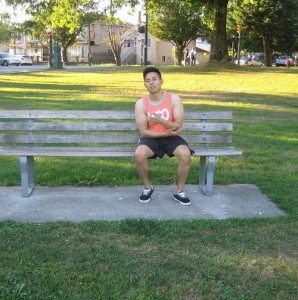Athletes with tennis elbow usually present with pain and tenderness in the outside aspect of the elbow and in the upper forearm muscles. The symptoms are thought to be due to the inflammation from a tear in the tendon of the forearm muscle as it attaches to the bony prominence at the outside aspect of the elbow, or the lateral epicondyle. The tendon that is usually involved originates from the muscle Extensor Carpi Radialis Brevis, which is mainly in charge of extending the wrist and fingers. Repetitive bending at the elbow then forces the tendon to rub against the bone eventually leading to the wear and tear of the tendon. Thus, athletes involved in racquet sports and other jobs that involve prolonged periods of repetitive wrist extension and forearm rotation, such as carpenters and mechanics, are commonly affected by this injury.
Being an overuse injury, Tennis elbow usually affects the dominant arm of an athlete. It is estimated that 1 to 3 percent of the population are affected with this injury with most people between 30 to 50 years old. Moreover, both men and women are affected equally.
Signs and Symptoms of Tennis Elbow
Signs and symptoms of a tennis elbow injury develop gradually. An athlete should suspect having this injury if the following are observed:
- Worsening Pain and tenderness at the lateral or outside aspect of the elbow
- Worsening Pain and tenderness at the upper forearm muscles
- Swelling around the area of the elbow
- Weakened grip strength especially when the elbow is flexed at a 90 degree angle

Treatment of Tennis Elbow
Treatment of tennis elbow involves both non-surgical and in more long-standing and severe cases, surgical approaches. The following treatment options are as follows:
- Rest the muscle by minimizing any activities that may aggravate or trigger the pain at the elbow
- Physical therapy or occupational therapy such as massages, strengthening exercises and stretching may improve muscle recovery
- Non steroidal Anti-inflammatory drugs such as ibuprofen and aspirin may reduce pain and swelling
- Corticosteroid injections such as cortisone
- Acupuncture
- Extracorporeal shock wave therapy
- Open or arthroscopic surgery to reattach healthy muscle to the lateral epicondyle
To learn how to manage symptoms of tennis elbow, enroll in First Aid Courses.
Prevention for Tennis Elbow
Tennis elbow can be easily prevented with the following steps:
- A counterforce brace may help lessen the stress on the muscle and thus may minimize the risk of a tendon tear
- Usage of the proper technique and the proper equipment in the sport or in a job
- Ensuring that there is adequate rest and recovery after an intense workout
- Limit the over use of the wrist and gripping objects too tight
Prognosis of Tennis Elbow
Prognosis of a tennis elbow is usually good as it is a self-limiting injury. Most athletes, around 90 percent of them, recover fully within a year of adequate treatment and having appropriate preventive measures in place. The other 10 percent usually require more invasive procedures such as the surgical options mentioned above.
Tennis elbow, or otherwise known as lateral epicondylitis, is a common overuse injury due to the repetitive use of the arm, forearm and hand muscles often seen but not limited to racquet sports such as tennis.
